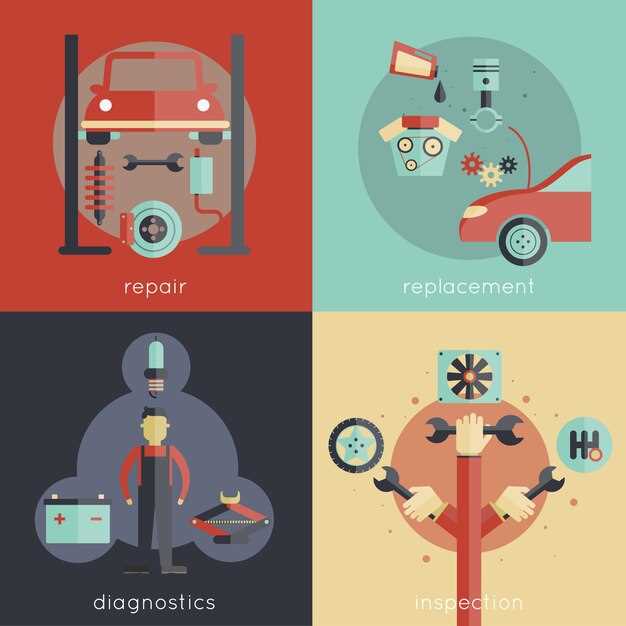
In the world of trucking, engine performance is pivotal to efficiency and reliability. A well-functioning engine not only ensures smoother operation but also extends the lifespan of the vehicle. However, truck engines can experience a range of issues, each having unique signs and symptoms. Understanding these common problems is essential for any truck owner or operator looking to maintain optimal performance.
Engine issues can stem from various sources, including fuel system malfunctions, electrical complications, and mechanical failures. Identifying these problems early can save time and costly repairs. This article delves into the most frequently encountered engine performance issues in trucks, providing insights into diagnostics and potential solutions. With a focus on user-friendly guidelines, we aim to equip truck operators with the knowledge to address these concerns effectively.
By recognizing the symptoms associated with engine inefficiencies, operators can take proactive measures. Whether it’s a loss of power, unusual noises, or excessive exhaust emissions, the early detection of these signs can lead to timely interventions. In the following sections, we will explore each common issue, helping you become proficient in diagnosing engine performance problems.
Identifying Symptoms of Engine Misfire in Heavy-Duty Trucks

Engine misfire in heavy-duty trucks is a critical issue that can lead to decreased performance and potential engine damage if not addressed promptly. Recognizing the symptoms early can help prevent further complications. Common signs of an engine misfire include irregular engine idle, which may feel shaky or unstable when the truck is stationary. Drivers may also experience a noticeable loss of power, particularly during acceleration or when climbing inclines, as the engine struggles to maintain performance.
Another indication of a misfire is the presence of a rough running condition, where the truck exhibits jerking or stalling during operation. This can be particularly concerning when driving at high speeds or under heavy loads. Additionally, abnormal exhaust emissions can signal a problem, with visible smoke or excessive emissions often accompanying a misfiring engine.
Drivers should also be aware of potential dashboard warning lights, especially the check engine light. If this light illuminates, it may indicate a misfire along with additional diagnostics that could narrow down the underlying issue. Unusual engine sounds, such as popping or backfiring, can further confirm misfire symptoms, indicating that fuel is not igniting properly within the combustion chamber.
Finally, decreased fuel efficiency can be a notable symptom of a misfire. A sudden drop in miles per gallon may suggest that the engine is working harder to compensate for the misfire. Monitoring these symptoms closely can help truck operators take appropriate action before the situation escalates into more severe problems.
Assessing Fuel Efficiency Problems and Their Impact on Performance

Fuel efficiency is a critical aspect of truck performance that directly affects operating costs and overall productivity. When a truck experiences decreased fuel efficiency, it can signal underlying mechanical issues or inefficiencies that need to be addressed. Identifying and assessing these problems is essential to maintaining optimal engine performance.
One of the most common causes of poor fuel efficiency is a malfunctioning fuel system. Issues such as clogged fuel filters, failing fuel pumps, or faulty injectors can disrupt the delivery of fuel to the engine, leading to incomplete combustion and increased fuel consumption. Regular inspection of the fuel system components can identify potential problems before they significantly impact performance.
Another significant factor affecting fuel efficiency is the condition of the engine itself. Worn components, such as piston rings or cylinder walls, can lead to decreased compression and inefficient fuel burning. Additionally, the air intake system must be clean and unobstructed. A dirty air filter can limit airflow, causing the engine to work harder and consume more fuel. Periodic maintenance, including changing filters and inspecting engine components, is vital for ensuring efficient performance.
Tire pressure and condition also play a key role in fuel efficiency. Under-inflated or unevenly worn tires increase rolling resistance, forcing the engine to exert more power to maintain speed. Regular tire inspections and maintaining proper inflation levels can enhance both fuel efficiency and vehicle handling.
Driving habits significantly influence fuel consumption as well. Aggressive driving, such as rapid acceleration and hard braking, can lead to excessive fuel use. Training drivers in fuel-efficient driving practices can help mitigate inefficiencies and extend the life of the vehicle.
Monitoring fuel efficiency metrics, such as miles per gallon (MPG) or fuel consumption per mile, can provide valuable insights into performance trends. By analyzing these metrics over time, fleet managers can identify abnormal consumption patterns and take corrective action, whether it involves maintenance, repairs, or driver training programs.
In summary, addressing fuel efficiency problems promptly is crucial for maintaining truck engine performance. Regular maintenance, attention to driving habits, and continuous monitoring can help prevent inefficiencies that not only affect fuel consumption but also compromise the overall reliability and longevity of the vehicle.
Analyzing Exhaust Emissions and Their Relationship to Engine Health
Exhaust emissions are a critical indicator of a truck engine’s health and performance. Analyzing these emissions can provide valuable insights into potential issues that may affect engine efficiency and reliability. The composition of exhaust gases, primarily carbon monoxide (CO), nitrogen oxides (NOx), hydrocarbons (HC), and particulate matter (PM), serves as a diagnostic tool for identifying underlying problems.
Carbon Monoxide (CO) is a colorless, odorless gas produced during incomplete combustion. Elevated levels of CO in exhaust can indicate a rich fuel mixture, improper fuel injection, or malfunctioning oxygen sensors. These issues may lead to reduced fuel efficiency and increased engine wear if left unaddressed.
Nitrogen Oxides (NOx) are formed at high temperatures during combustion and are typically associated with high combustion pressures. Excessive NOx emissions can signal problems such as inadequate combustion chamber temperatures or a faulty EGR (Exhaust Gas Recirculation) system. Addressing NOx issues is crucial, as they contribute to air pollution and can signal a need for maintenance or adjustments in the engine’s timing.
Hydrocarbons (HC) represent unburned fuel or fuel that has undergone incomplete combustion. High HC emissions often suggest issues such as valve leakage, worn piston rings, or malfunctioning fuel injectors. Reducing HC emissions is essential, not only for improving engine performance but also for compliance with environmental regulations.
Particulate Matter (PM) primarily comprises soot from diesel engines and can indicate improper fuel combustion or issues with the fuel delivery system. High levels of PM can lead to clogged filters and reduced engine efficiency. Regular monitoring of PM can help detect maintenance needs before they escalate into more serious problems.
To effectively analyze exhaust emissions, regular diagnostic checks should be performed. Utilizing advanced emission testing equipment can help quantify the levels of various gases and particulate matter, allowing for a comprehensive assessment. Correlating these emission levels with engine performance parameters helps in pinpointing specific issues and formulating targeted solutions.
In conclusion, exhaust emissions analysis is a valuable strategy for maintaining optimal truck engine health. By closely monitoring emission levels and understanding their implications, truck owners and mechanics can address potential issues proactively, ensuring improved performance, greater fuel efficiency, and prolonged engine life.



